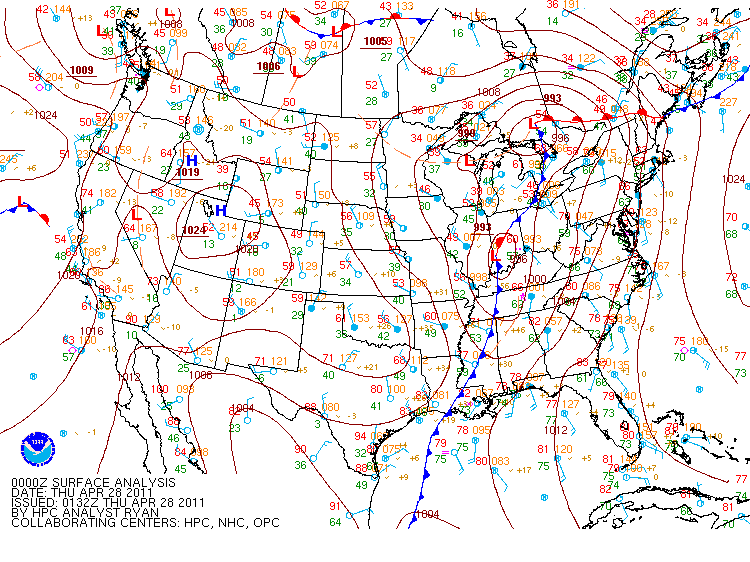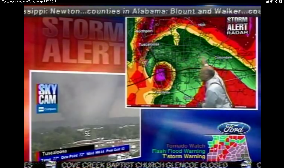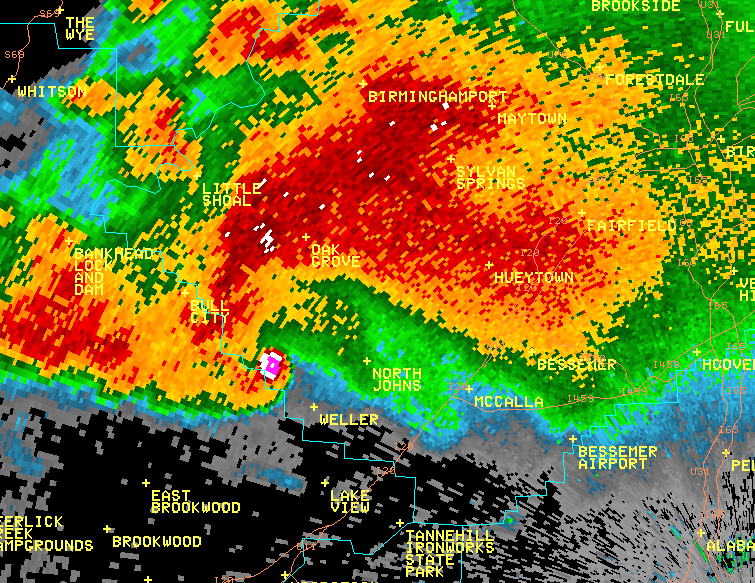On April 27, 2011, 62 tornados touched down in the state of Alabama. This was one of the largest super-tornado outbreaks in Alabama history. For days, weather forecasters warned residents of an ensuing outbreak, and for good reason. Two lines of severe weather affected the state. An (unpredicted) line of storms produced damaging winds and multiple EF-1 and EF-2 tornadoes during the morning hours. During the afternoon, a second line of severe weather was preceded by numerous supercells. Many of the tornadoes that touched town that afternoon were determined to be EF-3, EF-4, and EF-5 tornadoes. The tornadoes produced almost 700 miles of damage and resulted in 140 deaths\ 2000 injuries. Perhaps the most destructive tornado was the EF-4 that hit two of Alabama's populous cities. The Tuscaloosa-Birmingham tornado stayed on the ground for over 80 miles before occluding, diminishing, and touching down again to the north. Estimated winds inside the storm were 190 mph. Shown below is a radar signature associated with powerful mesocylones (rotating updrafts out of which tornados decend). These "hook echos" often have debris balls, which are areas of enhanced reflectivity caused be debris. The supercells formed out ahead of a cold front, in the warm sector of a midlatitude cyclone to the north of the state. -Costa Christopoulos


